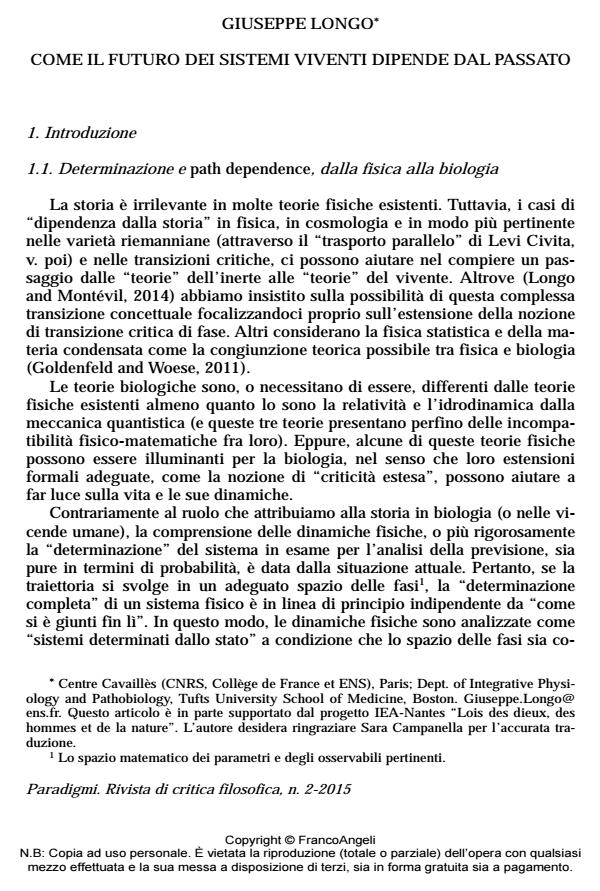Come il futuro dei sistemi viventi dipende dal passato
Journal title PARADIGMI
Author/s Giuseppe Longo
Publishing Year 2015 Issue 2015/2
Language Italian Pages 25 P. 51-85 File size 108 KB
DOI 10.3280/PARA2015-002006
DOI is like a bar code for intellectual property: to have more infomation
click here
Below, you can see the article first page
If you want to buy this article in PDF format, you can do it, following the instructions to buy download credits

FrancoAngeli is member of Publishers International Linking Association, Inc (PILA), a not-for-profit association which run the CrossRef service enabling links to and from online scholarly content.
The dependence on history of both current and future dynamics of life is a common intuition in biology and in humanities. This paper hints to a preliminary, but rigorous analysis of "path dependence", which may be found also in physics, in terms of invariants and invariance preserving transformations. The idea is that the (relatively) invariant traces of past ecosystemic transformations contribute to the "determination" of present and future state of affairs and introduce by this a peculiar form of unpredictability (or randomness) in biology, at the core of novelty creation. This applies a fortiori to cognitive and historical human dynamics.
Keywords: Enablement, extended criticality, path dependence, randomness, unpredictability.
Giuseppe Longo, Come il futuro dei sistemi viventi dipende dal passato in "PARADIGMI" 2/2015, pp 51-85, DOI: 10.3280/PARA2015-002006